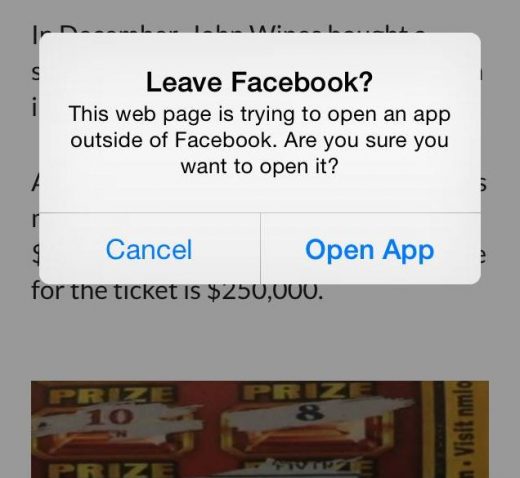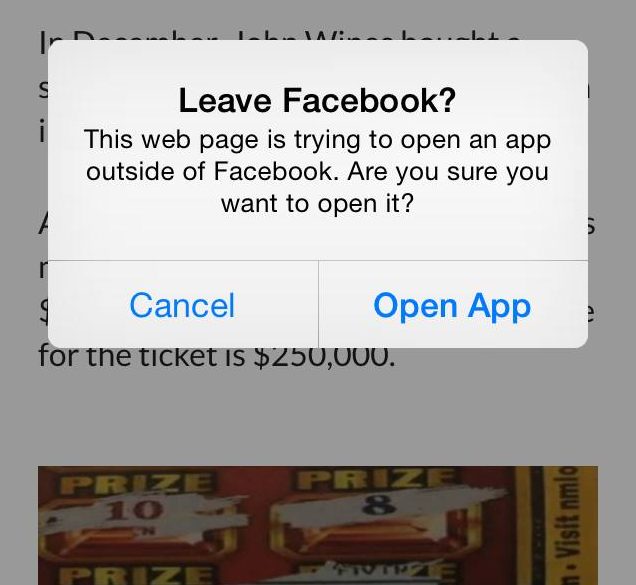The Ecosystem Wars: Facebook, Apple, Google
June 23, 2016
If you’re like most marketers today, you want to provide the best customer experience possible.
Managing your relationship with your customers and constantly improving on their experience is the number one way to build a successful, sustainable business.
People are researching products on their phones in line at the grocery store and making a purchase on their desktop at home. They see a TV commercial and look up the brand’s Facebook Page two seconds later.
Over the past decade, everything has changed. We all have computers in our back pockets. We can talk to brands at any point in the day, across a ton of different channels, and everyone else can see it.
This marks an era of unprecedented opportunity for marketers to build customer-first business models. But at a time when you’re expected to own the entire customer lifecycle – from awareness and engagement to conversion and loyalty – the landscape is fragmented.
Marketers only own a sliver of the customer experience, because so much of it is now controlled by the ecosystems of Facebook, Apple, and Google.
The Rate of Change
“The customer journey is not a perfect funnel, the customer journey is a maze.”
Mobile devices have proliferated at a crazy, crazy rate.
Research from the Advocate Market Research Bureau shows that 79% of consumers age 18-64 use three or more devices every day and the average household owns 5.7 Internet-connected devices.
Overall, 50% of eCommerce transactions take place across multiple devices. Conversion rates are almost the same among every device. Among consumers:
– 43% convert on tablets
– 44% convert from a smartphone
– 46% convert from a desktop
To make things more complicated, your customers are hopping back and forth between different channels as they research your product, consume content, and make purchases. And the data about these customer journeys is all locked away in three walled gardens.
The Walled Gardens of Data
It’s impossible to understate the dominance of Facebook, Apple, and Google. When we look at how people spend time on their phones, we can see that, according to research from Comscore, 80% of their time is spent on three apps: Facebook, YouTube, and Facebook Messenger.

Keep scrolling down the top apps and you’ll see a lot of familiar names… all within the same brands. Google Search, Google Play. Gmail, Instagram (Facebook). Apple Music, Apple Maps.
On mobile, your customer isn’t experiencing your product or your content on your website or your app. They’re experiencing it through the filter of Google, Facebook, or Apple.
Do you know how your customers on Facebook get to your product page? Do you know what they do there and whether they bounce? Do you know if the consumers using your app go to your mobile website to make a final purchase? Are you sure that someone who clicked a search ad from Google really went on to buy something from your website? What if they just looked at the product page and then bought later on when they were at home?
Marketers are increasingly ceding control and ownership of their customer data to Facebook, Google, and Apple and depend on analytics tools that only operate within those walled gardens. Each one of these brands is trying to control a different space and, in effect, control the entire customer journey.
1. Facebook: Instant Articles, Instant Views
“You can’t audit the numbers of Facebook or drop your pixels onto it. You can’t compare a Facebook customer to an SMS customer or Twitter customer or email customer.”
To entice companies to publish content directly to Facebook, Facebook has made Instant Articles available to every brand.
Instant Articles really do work. Initial Facebook research found that Instant Articles receive 20% more clicks in Facebook’s News Feed, readers are 70% less likely to abandon the article and they’re 30% more likely to share.
There’s no doubt the user experience of Facebook Instant Articles is quick, easy, and clean. It’s better than clicking out of the Facebook app into a mobile website that may or may not be optimized. Facebook knows that, too. There’s even a warning when you’re leaving the Facebook app for another app:
It’s very likely that Facebook’s algorithm favors native content. Facebook videos have a higher reach and higher engagement than videos from other platforms. Facebook Instant Articles will probably see similar results in the near future.
If you build content solely for Facebook, though, you’re losing that connection with your customer and trusting analytics to Facebook Insights alone.
The more time your users spend on your Facebook Page, the easier it is for them to be pulled away by all the other content – and ads – that Facebook has to offer. Your customer’s experience becomes an experience of Facebook, not your company.
In my conversations with marketers, they are concerned about their lack of control and visibility on Instant Articles, but worry about not playing along and following the traffic. Also, publishers are concerned about their ability to monetize these pages. There is lots to consider.
Facebook is disrupting marketing as we know it, but it’s ultimately in the name of the user experience. The bottom line is that, just like Facebook, brands need to keep optimizing for their customer experience, too. That means owning it, not renting it from Facebook.
2. Apple’s Appetite for Apps
“Universal Links can be scary. You can’t see what’s happening if every website goes to apps by default, because it’s all on IOS. There are no web or mobile analytics tools that work, since it all lives on the OS level.”
Back in September, we talked about the changes in IOS9 and how they impacted marketers. The one that grabbed all the headlines was that Apple allowed developers to build ad-blocking apps.
This was a seismic disruption to the existing ad model for businesses, especially publishers. By 2017, mobile analytics firm Tune expects ad-blocking app adoption to reach up to 80%.
This comes at a cost of millions of dollars a year to advertisers, publishers, and analytics firms. The ads paying for free content get blocked and nobody gets paid.
Other features of IOS9, like Spotlight Search and Universal Links, are strong indicators that Apple wants every brand to focus on apps, not mobile web. Again, we see that the customer experience Apple wants is one that lives strictly within the IOS ecosystem.
For businesses, though, focusing solely on mobile development and content guarantees that you have a narrow line-of-sight. Customers aren’t spending all day within apps. They’re constantly hopping across multiple apps, devices, and channels.
If you dedicate tons of budget to just building a great mobile app experience at the cost of everything else, you’re only going to know the customer experience from an app level.
3. The Mobile Global Google
“Without your customer data, you can’t create a customer experience.”
Google dominates mobile ad revenue, taking about 50% of total ad revenues today. So the ad-blocking of IOS9 poses a big problem for the search giant.
Google’s solution is to make the mobile web as seamless and easy-to-use as apps. That’s the motive behind Accelerated Mobile Pages (AMP). AMP pages load 4x faster and use 8x less data than a traditional mobile-optimized page.
That way, consumers see more Google ads and don’t feel compelled to use apps that are in Apple’s ecosystem. The pages look good, they feel good, they load… good.
But, again, when you’re depending on Google analytics platforms alone (as we’ve covered in Bitly vs. Google Analytics) you can only see what Google’s data shows.
Scaling the Walls
“You can’t understand the customer experience if you can’t connect the dots between these three platforms.”
Facebook dominates social, Apple dominates apps, and Google dominates mobile search and advertising. But each of these ecosystems is separate. That has spawned a multitude of analytics tools, data sets, systems and processes that all fragment the brand’s view of the customer.
At Bitly, our mission is to create an Internet that marketers can see across. The link is the elemental unit of the web and interacts across every marketing campaign, every channel, and every device. By using trackable links in every channel, you can create a unified view of your customer so you can optimize their present and future experience.
In a digital world of walled gardens, the link is the grappling hook you need to scale the walls.
Beyond that, companies need to refocus efforts on integrating data across their marketing teams. Data silos create inaccurate customer profiles and duplicate information. That ultimately means you can’t measure the customer experience experience as it stands. And if you can’t measure something, then you can’t improve it.
Digital & Social Articles on Business 2 Community
(53)



